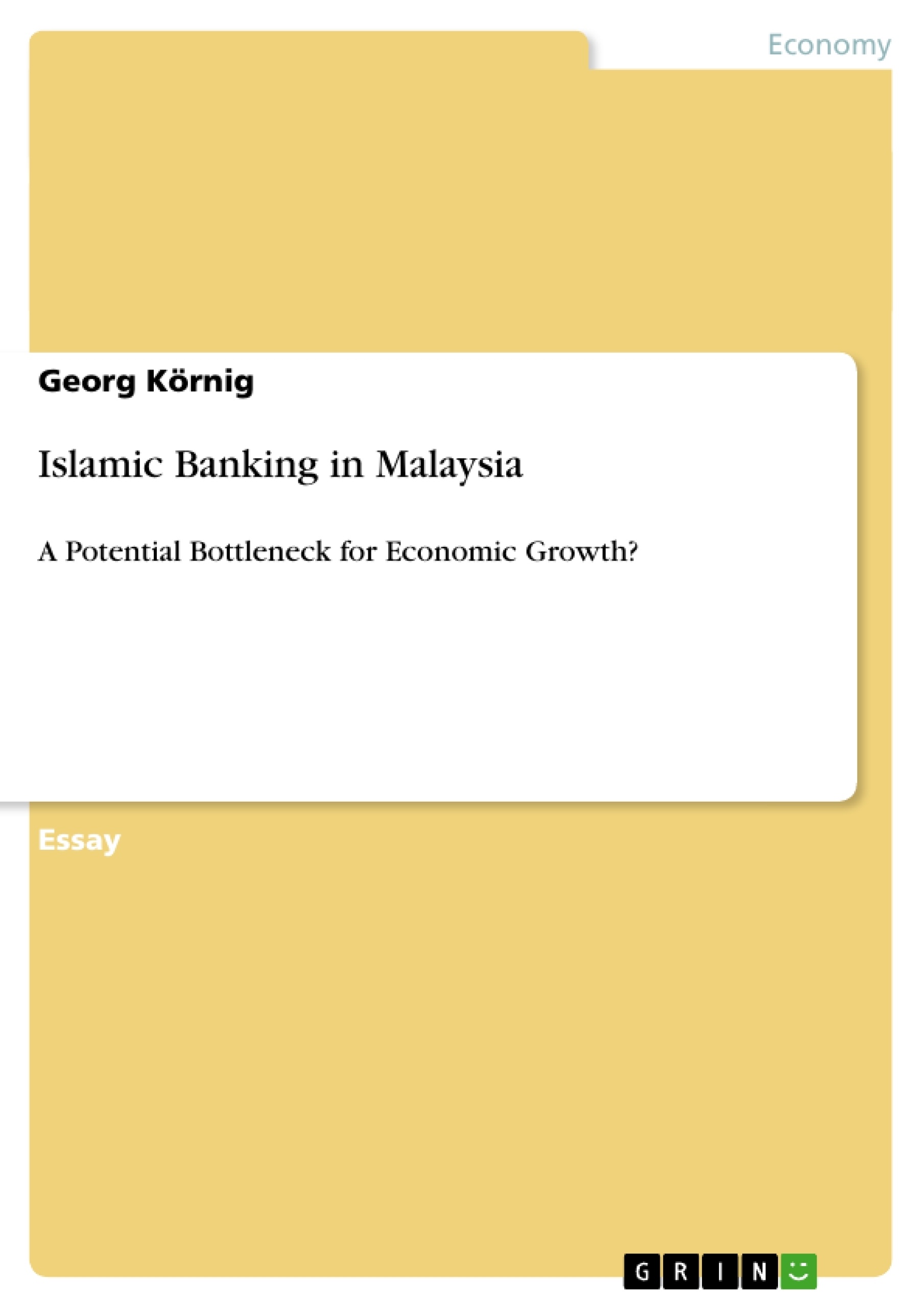Malaysia is one of the largest and fastest growing markets for Islamic Finance and Banking worldwide. The current market-share of Islamic banking (IB) accounts for ca. ten 10% of the total banking sector, compared to about 0.1% in 1994. The total share of bank assets held by Islamic banks worldwide amounts to 0.5%. On the one hand this outstanding growth stems from the initiative of Malaysia’s central bank, Bank Negara Malaysia (BNM). BNM provided for an Islamic Inter-bank money market (IIMM) in January 1994. On the other hand the opportunity to invest in Shari’a-compliant financial products is more and more embraced by the Muslim community all around the globe. This consensus is not argued about, but the influence of the Islamic Banking-specific properties on the financial system and the real economy is a field of scientific quarrel. The author tries to analyse the influence of Islamic Banking with regard to Malaysia and its dual financial system. This essay is structured as follows: In the beginning the author will outline a short history of Islamic Banking, followed by a comparison between conventional and Shari’a-compliant financial services. The question, if Islamic Banking could prove as a bottleneck for economic development is answered in the concluding section of this essay.
Inhaltsverzeichnis (Table of Contents)
- Contemporary Islamic Banking
- Islamic Banking: Principles and Practice
- Conventional vs. Islamic Banking
- The Islamic Inter-Bank Money Market (IIMM)
Zielsetzung und Themenschwerpunkte (Objectives and Key Themes)
This essay analyzes the influence of Islamic Banking (IB) on Malaysia's dual financial system. It explores the historical development of IB, compares it to conventional banking, and examines the potential impact of IB on economic growth.
- The historical origins and principles of Islamic Banking
- The differences between conventional and Islamic banking practices
- The role of the Islamic Inter-bank Money Market (IIMM) in Malaysia
- The potential impact of Islamic Banking on economic development
- The role of Islamic finance and its potential to contribute to economic growth
Zusammenfassung der Kapitel (Chapter Summaries)
- Contemporary Islamic Banking: This chapter provides a brief history of Islamic banking, tracing its roots back to the pre-Islamic era and highlighting the core principles that differentiate it from conventional banking. It discusses the concept of “homo islamicus” and contrasts it with the Western “homo economicus” model, highlighting the moral values embedded in Islamic economic thought.
- Islamic Banking: Principles and Practice: This chapter delves into the fundamental principles of Islamic banking, emphasizing the prohibition of interest (riba) and its focus on risk and reward sharing. It discusses the concept of “zakat,” a religious tax, and the emphasis on transparency and ethical business practices in Islamic banking.
- Conventional vs. Islamic Banking: This chapter compares conventional and Islamic banking systems, highlighting key differences in terms of interest charging, collateral requirements, customer relationships, and Shari'a supervision. It discusses the challenges faced by Islamic banks in navigating a dual financial system.
- The Islamic Inter-Bank Money Market (IIMM): This chapter examines the development and structure of the IIMM in Malaysia, focusing on its role in providing a Shari'a-compliant inter-bank market for Islamic financial institutions. It discusses the rationale behind creating the IIMM and its impact on the Malaysian financial system.
Schlüsselwörter (Keywords)
This essay focuses on Islamic banking, Shari'a compliance, economic growth, financial system, risk and reward sharing, interest prohibition, zakat, inter-bank money market, and dual financial system.
- Quote paper
- B.A. Georg Körnig (Author), 2011, Islamic Banking in Malaysia, Munich, GRIN Verlag, https://www.grin.com/document/177707



